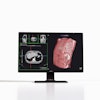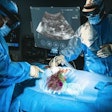Dear Advanced Visualization Insider,
Clinicians have long relied on conventional imaging to examine internal anatomy during presurgical planning. In recent years, various groups have explored the possibility of using emerging technologies such as augmented reality (AR) and 3D printing to further enhance preoperative visualization.
In a prime example, researchers from the Netherlands created individually tailored AR and 3D-printed kidney models of patients with kidney tumors and explored their potential utility in planning and guiding surgical treatment. Discover how these 3D imaging techniques fared compared with MRI and CT in this edition's Insider Exclusive.
Interest in medical 3D printing has steadily grown across the globe. A group from Saudi Arabia produced 3D-printed models based on the CT scans of children with craniofacial deformities to facilitate discussion about the condition and treatment strategies with the children's parents. A separate group from Israel made international headlines after reporting the successful creation of a 3D-bioprinted model that not only looked like an actual human heart but also captured its immunological, biochemical, and cellular properties.
Virtual reality (VR) is yet another 3D imaging technique that has proved valuable in a wide range of clinical applications.
- A team of interventional radiologists from Washington found that VR allowed them to perform catheterization more quickly and efficiently than the use of standard fluoroscopy to guide the procedure.
- Researchers from Virginia presented personalized VR 3D models to patients with an abdominal aortic aneurysm. Viewing these models through a VR headset increased the patients' understanding of their condition and their engagement in the decision-making process more so than looking at CT scans or other informational resources.
- In a new Radiology article, Dr. Eliot Siegel from the University of Maryland Medical Center, Dr. Raul Uppot from Massachusetts General Hospital, Dr. Jesse Courtier from the University of California, San Francisco, and colleagues detailed four practical applications of VR and AR in radiology.
Finally, cinematic rendering, a form of data reconstruction that produces photorealistic images, continues to pick up steam. Radiologists from Johns Hopkins University discussed how cinematic rendering could help enhance the visualization of spleen anatomy and pathology. And researchers from China demonstrated possible benefits of using cinematic rendering for the evaluation of soft-tissue sarcomas.
Stay up to date on the latest news in the field by heading over to the Advanced Visualization Community at AuntMinnie.com.



















